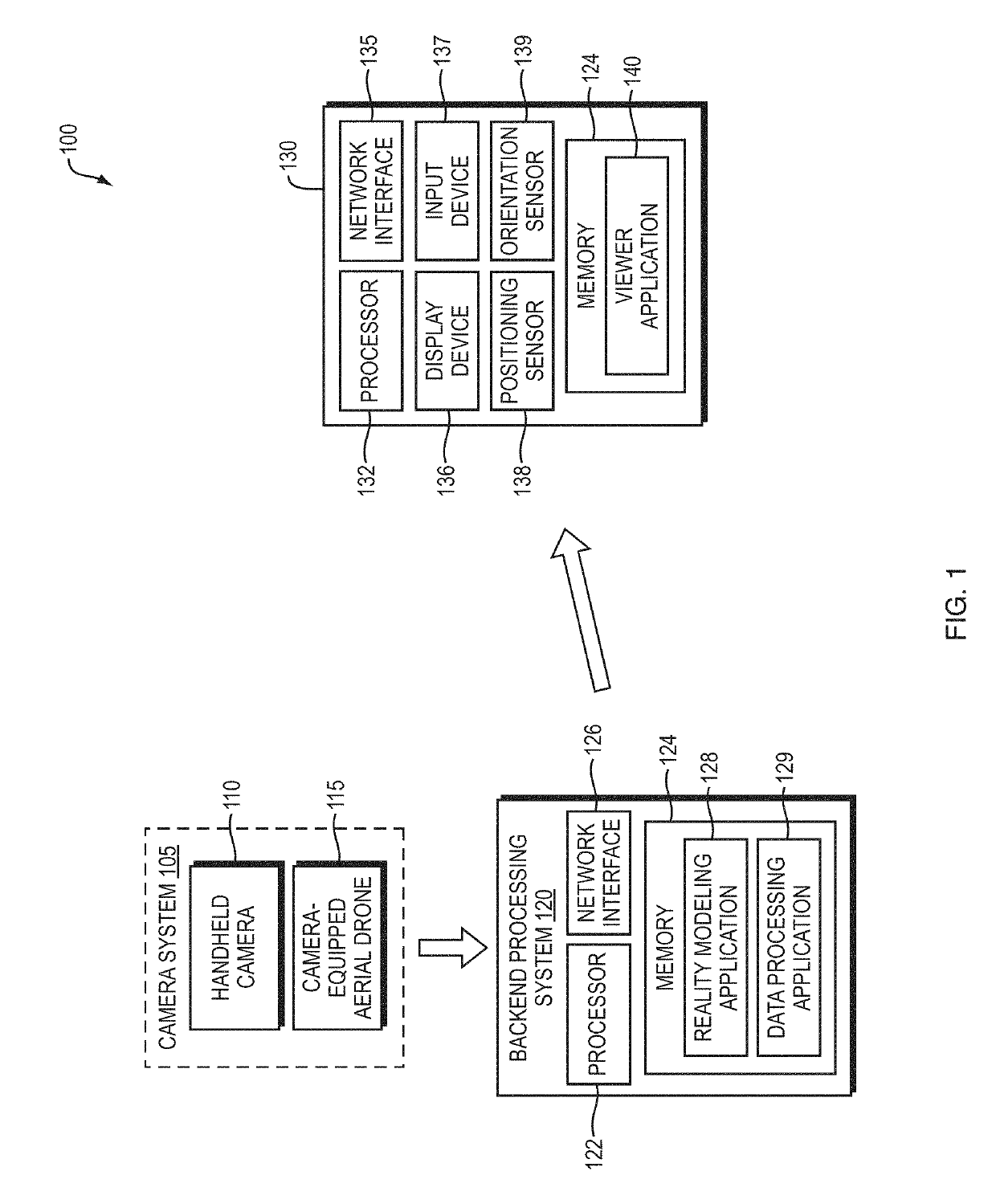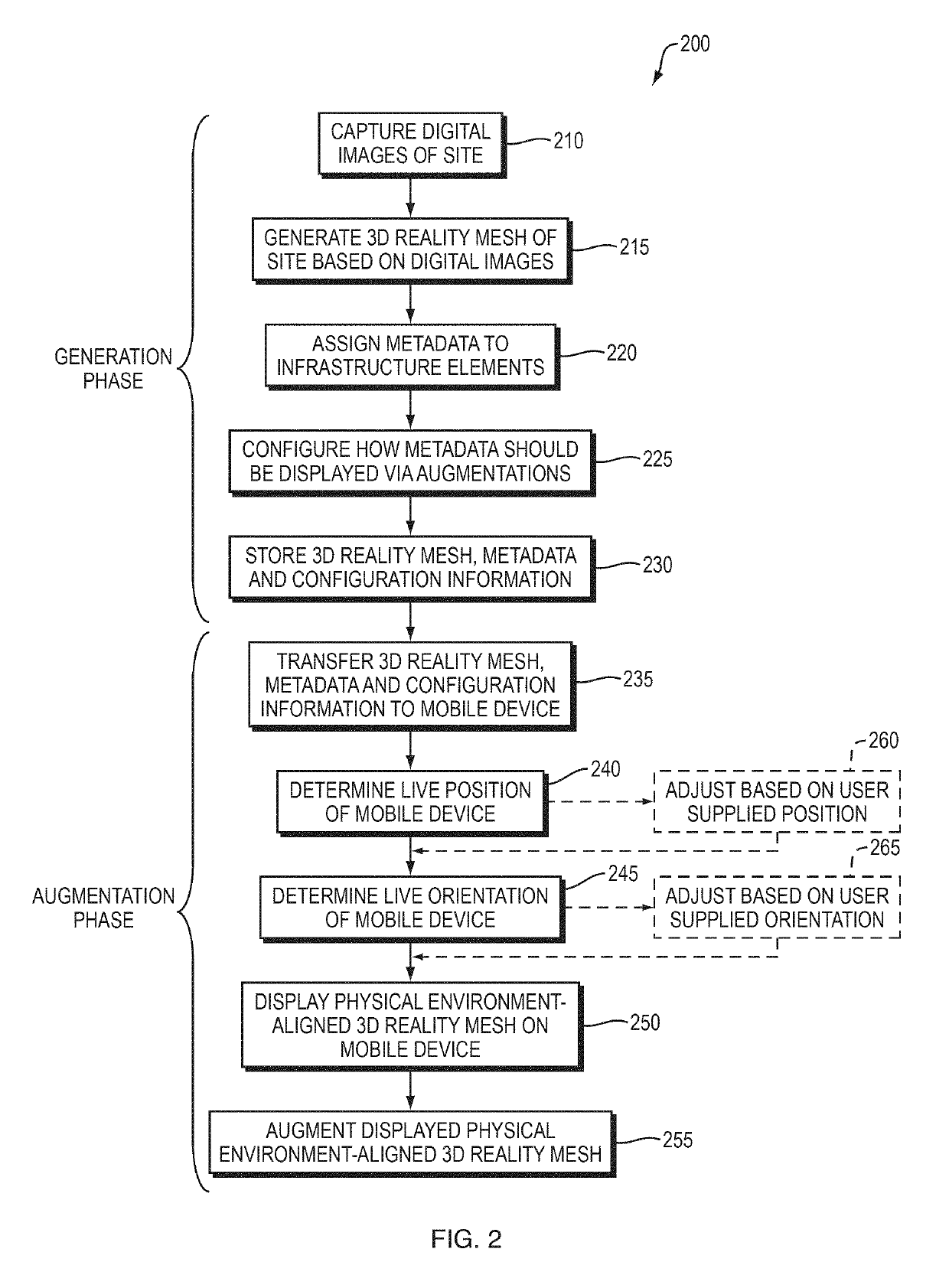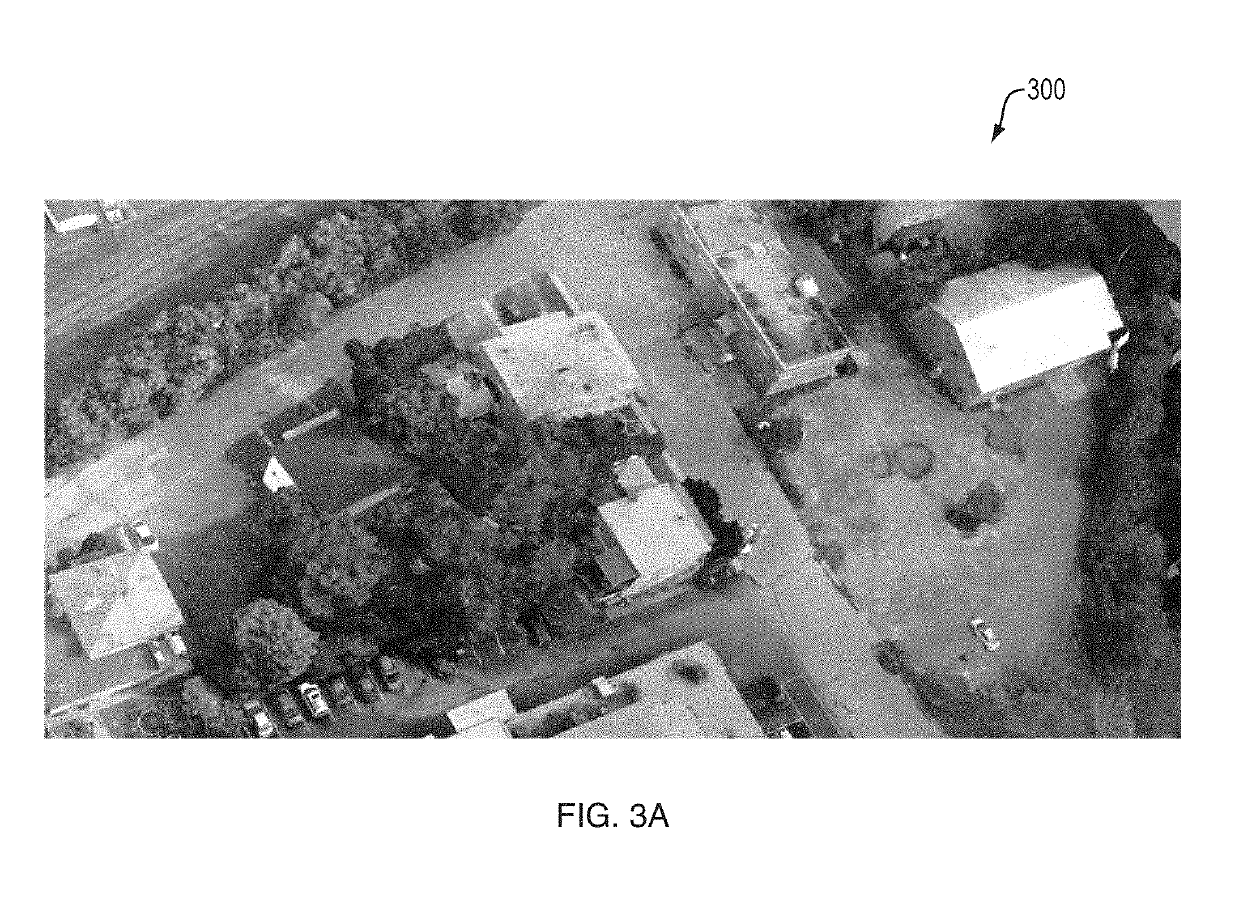Tool for onsite augmentation of reality meshes
a technology of augmented reality and meshes, applied in the field of augmented reality, can solve the problems of difficulty in accessing when, unable to develop a robust system that is robust enough for widespread adoption in infrastructure design and maintenance space, and augmented reality systems continue to be hindered, so as to avoid the problem of camera tracking
- Summary
- Abstract
- Description
- Claims
- Application Information
AI Technical Summary
Benefits of technology
Problems solved by technology
Method used
Image
Examples
Embodiment Construction
[0018]FIG. 1 is a diagram of an example system 100 for simulating augmented reality by augmenting a pre-generated, physical environment-aligned reality mesh. The system includes a camera system 105, including a handheld camera 110 (e.g., a handheld digital single-lens reflex (DSLR) camera) and / or a camera-equipped aerial drone 115, for capturing a large number of digital images (i.e. photographs) of a site. The camera system may also potentially include a laser scanner or time of flight camera (not shown) for capturing point clouds of the site.
[0019]The digital images (and potentially point clouds) of the site are transferred to a backend processing system (e.g., a desktop computer, a cloud-based server, etc.). The backend processing system 120 includes at least a processor 122 and a memory 124 that stores software for execution on the processor, and a network interface 126. Among other software, the memory 124 may store a reality modeling software application 128 and a data process...
PUM
 Login to View More
Login to View More Abstract
Description
Claims
Application Information
 Login to View More
Login to View More - R&D
- Intellectual Property
- Life Sciences
- Materials
- Tech Scout
- Unparalleled Data Quality
- Higher Quality Content
- 60% Fewer Hallucinations
Browse by: Latest US Patents, China's latest patents, Technical Efficacy Thesaurus, Application Domain, Technology Topic, Popular Technical Reports.
© 2025 PatSnap. All rights reserved.Legal|Privacy policy|Modern Slavery Act Transparency Statement|Sitemap|About US| Contact US: help@patsnap.com



